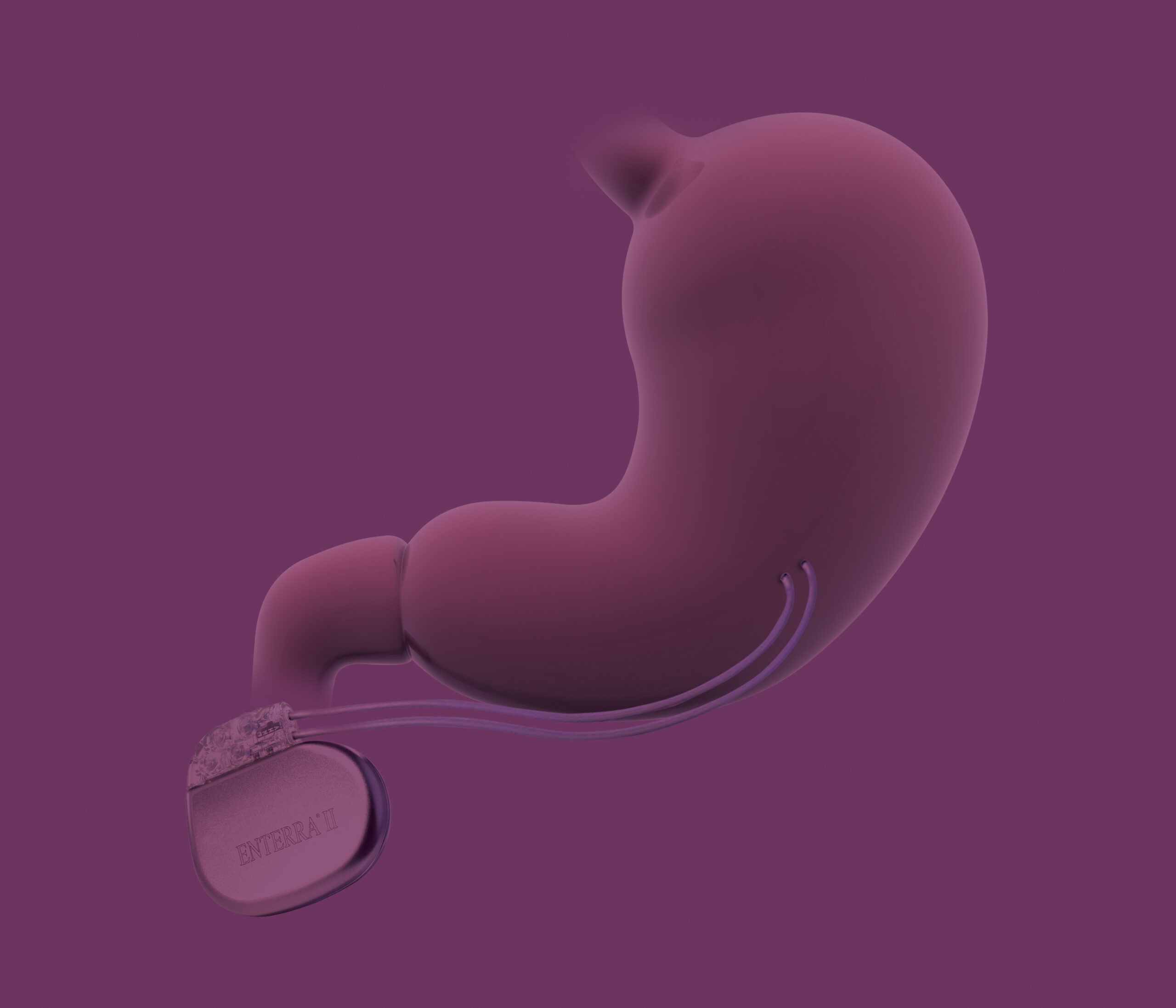Treatment options
Know your options
If you’re living with symptoms of gastroparesis*, understanding treatment options can be a powerful first step in finding relief.
Below are a range of treatment options your doctor may recommend to help you manage your symptoms of chronic nausea and vomiting.

Treatment options
Diet Changes
A modified diet may include increasing liquid intake, restricting fats and plant fiber, and eating smaller, more frequent meals to maintain adequate nutrition and minimize symptoms.
Medications
Two types of medication are often used to treat symptoms:
- Prokinetic drugs: Improve the rate of stomach emptying
- Antiemetic drugs: Control nausea and vomiting (but not stomach emptying1)
Enteral Nutrition
Often temporary or used for severe symptoms, liquid nutrition is delivered directly to the stomach or small intestine through a feeding tube.
Total parenteral nutrition (TPN)
Typically used if enteral feeding is not sufficient or well tolerated, TPN delivers nutrients to the bloodstream through an intravenous (IV) infusion.
Gastric electrical stimulation
A small, surgically implanted device (Enterra® Therapy System) sends a small electrical current to stimulate the stomach’s muscles.
Gastric or intestinal surgery
Usually performed if no other treatments offer relief, all or part of the stomach may be removed, and a feeding tube may be placed into the wall of the stomach or small intestine.

Gastric electrical stimulation (GES)
Gastric electrical stimulation is appropriate for people whose gastroparesis symptoms do not improve after taking medication. Often, a combination of GES with Enterra Therapy, diet modification, and medication is necessary to effectively control nausea and vomiting symptoms associated with gastroparesis.
You can learn more about the probable benefits of gastric electrical stimulation and the risks and complications of the surgical procedure and ongoing therapy.
GES with Enterra Therapy is indicated for the treatment of chronic, resistant to medication nausea and vomiting associated with gastroparesis caused by diabetes or an unknown origin in patients aged 18 to 70 years.
For a complete list of adverse events, see Important Safety Information. This therapy has been approved by the Food and Drug Administration as a Humanitarian Device.*
Ask your doctor about potential side effects associated with each treatment option.
The information provided on this site is for general educational purposes only and is not a substitute for professional medical advice, diagnosis or treatment. Always talk to your doctor about the best treatment options for your individual situation.
- American Gastroenterology Association. Technical review on the diagnosis and treatment of gastroparesis. Gastroenterology. 2004;127:1592-1622.
Disclaimer: This page may include information about products that may not be available in your region or country. Please consult the approved indications for use. Content on specific Enterra Medical products is not intended for users in markets that do not have authorization for use.
IMPORTANT SAFETY INFORMATION
Enterra Therapy for treatment of chronic, resistant to medication nausea and vomiting associated with gastroparesis caused by diabetes or an unknown origin in patients aged 18 to 70 years: patients should always discuss potential risks and benefits of the device with their physician.
*HUMANITARIAN DEVICE
Authorized by Federal law for use in the treatment of chronic intractable (drug refractory) nausea and vomiting secondary to gastroparesis of diabetic or idiopathic etiology in patients aged 18 to 70 years. The effectiveness of this device for this use has not been demonstrated. What does this mean?
